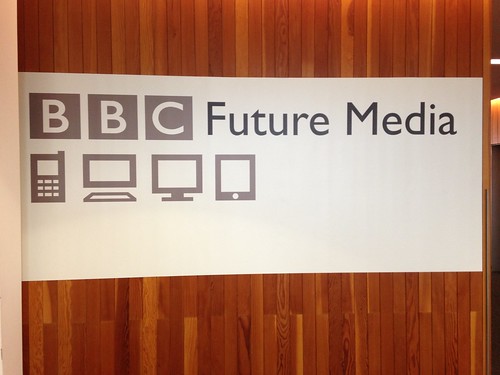Through historical accident, television has come to be seen as the first screen with our mobile devices as the second screen. This implies a mental model that's usually driven by television people who really mean that television is the primary screen whilst all others are merely secondary screens. When these devices are viewed from the perspective of the programme makers that is correct. But things change if we look at them from the perspective of the user.
The first screen is the one in your pocket. All others are secondary.
— Adewale Oshineye (@ade_oshineye) May 26, 2013
When we look at usage it becomes clear that mobile devices (currently just phones and tablets) are the primary screen whilst television and desktop computers are the secondary screens.
Mobile is my screen.
Tablet is our screen.
TV is their screen.
-- Simon Davies and Ade Oshineye
The above quote is a synthesis of points made by Simon Davies and Ade Oshineye during an Internet Week panel discussion. They reflect a way of looking at screens/devices that may have surprising amounts of explanatory power.
The mobile (phone) screen is the most personal screen. It tends to belong to one person who carries it everywhere and seldom shares it. That person will customise it with a combination of apps and bookmarks that's practically a fingerprint.
The tablet is large enough to be viewed by multiple people and is often shared within a family. As such it accumulates layers of choices from all the people who have used it. However it still tends to feel like a device that belongs to a small set of people. Whilst both of these devices empower people by giving them control over usage and content, the television is different.
Whilst it may belong to one or many you're never allowed to forget that the content on your television is decided by other people. They decide what you can watch and when you can watch it. As for customisation…forget it.
The final step is to realise that we shouldn't be thinking about a fixed number of screens. We're facing a multi-screen future. That means there are going to be N categories of M screens in your life. And the values of N and M will only increase over time.
This is not a problem we will solve by building responsive websites with a fixed number of breakpoints. This is not a even problem we will solve by pouring the same content into a fixed number of buckets or screen sizes.
This is a Cambrian Explosion of contexts, interactions between contexts and user journeys across contexts. Time to adapt.
This is not a problem we will solve by building responsive websites with a fixed number of breakpoints. This is not a even problem we will solve by pouring the same content into a fixed number of buckets or screen sizes.
This is a Cambrian Explosion of contexts, interactions between contexts and user journeys across contexts. Time to adapt.
